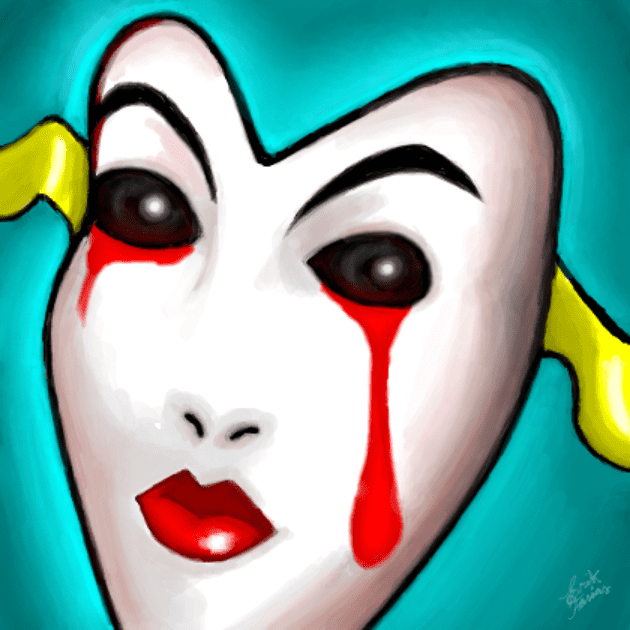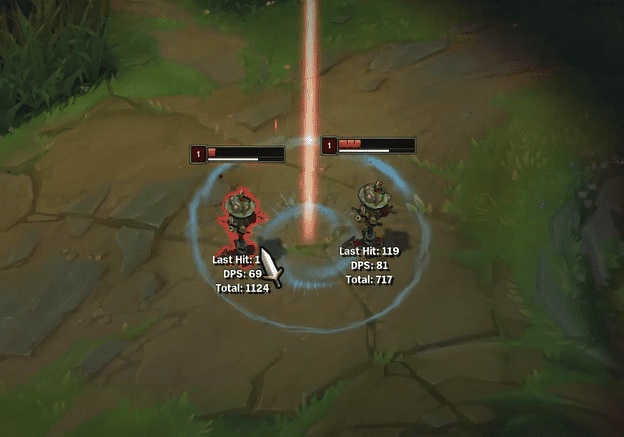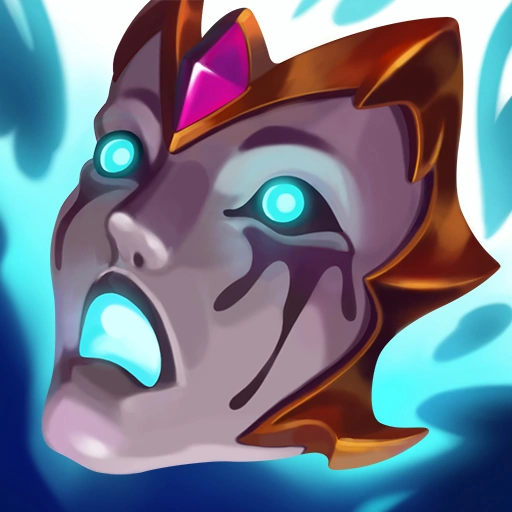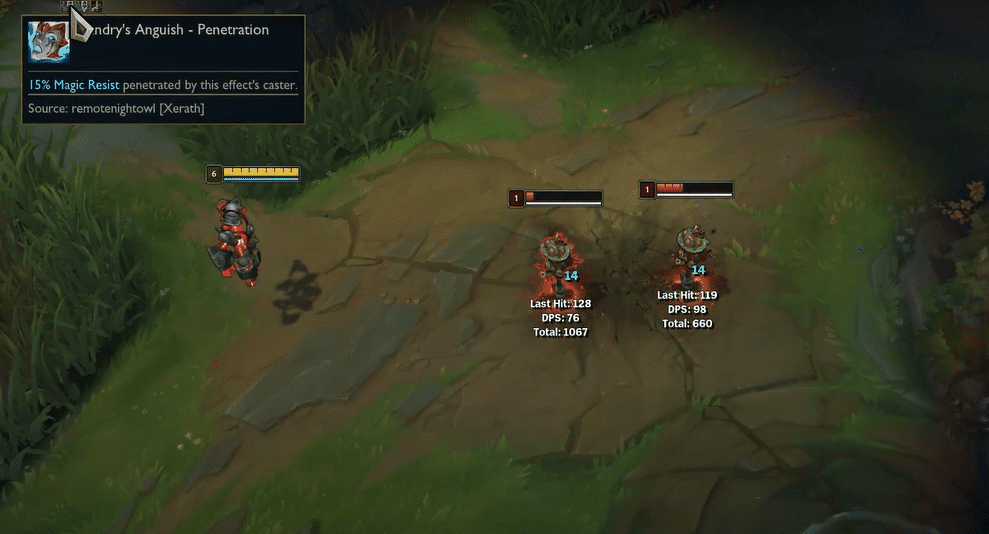- Blue Essence Emporium Guide - May 26, 2022
- League of Legends Houses - May 4, 2022
- League of Legends Pets - May 2, 2022
Liandry’s Torment was a legendary item that was replaced in patch 10.23 with Liandry’s Anguish. It was a caster mask that provided a significant boost to your ability power, health, and it had two interesting passive abilities.
Although labeled as an item for AP characters, it also provided some benefits for AD champions. In that regard, you could use it for various hybrid builds. It’s second unique passive, called Torment, was especially powerful against enemies with a high health pool.
Generally speaking, Liandry’s Torment was a nicely balanced item, given that the developers haven’t changed it a lot over the years. The only reason why it was ultimately removed is that Riot wanted to upgrade the mask into its stronger, mythic version.
In this Liandry’s Torment guide, I will talk more about the item and all of its interactions.
Key Info Up Front
Liandry’s Torment was a nice caster item that shone for mages, assassins, and certain hybrids. The mask was especially potent against immobilized and slowed enemies, becoming almost broken on certain champions.
Liandry’s Torment Basic Info

The great thing about Liandry’s Torment is that it gave champions both offense and defense. It had numerous similarities to Rod of Ages, Rylai’s Crystal Scepter, Morellonomicon, and Hextech Protobelt-01. The item was especially potent on champions who had other sources of damage over time, as well as movement impairment abilities.
To create this item, you required a total of 3,100 gold. The player could sell it at any time for 2,240 gold. The formula included Blasting Wand for 850 gold, Haunting Guise for 1,500 gold (435 gold for Amplifying Tome, 400 gold for Ruby Crystal, and 665 gold for a recipe), as well as 750 gold for Liandry’s Torment recipe.
Liandry’s Torment Stats and Uniques
Liandry’s Torment gave the wearer 300 health and 75 ability power. In terms of AP, it was one of the better caster artifacts at the time. Like with many items, its gold efficiency changed throughout the patches. For example, in some versions of League of Legends, it went as low as 78.43%.
What made Liandry’s Torment stand out are its two passive abilities known as Torment and Madness. Madness was an effect that would activate whenever you damaged an opposing champion with an ability, item, or auto-attack. It would start a 4-second counter during which your character would gain a 2% increase in damage per second, capping at 10%.
Torment was a passive unique that activated when you dealt ability damage. It would apply a DOT on an enemy unit that dished 0.75% of the unit’s max health as extra magic damage every 0.5 seconds. The effect lasted a total of 3 seconds, during which you would deal a total of 4.5% target’s health. If an enemy was immobilized or slowed, the damage per tick would increase to 1.25% of the unit’s max health as extra magic damage for a total of 7.5% target’s health.
The ability was even stronger against monsters dealing up to 100 damage per second.
How did Madness and Torment work?
Although you could only activate stacking of Madness by hitting an enemy champion, the bonus to damage would apply against all opposing units. In other words, the damage you dish would be considered as global. The only exception was true damage, which doesn’t benefit from Madness buff.
The buff would affect item passives and actives, as well as runes. For example, it would even affect the Torment damage. What made Madness passive even better is the fact it stacked with other similar multipliers such as Coup de Grace and Abyssal Mask.
As for the Torment, this damage was considered default damage for bonuses and effects. Keep in mind that the effect would not trigger with the majority of on-hit effects or on-hit items like Nashor’s Tooth, Guinsoo’s Rageblade, Clockwork, Windup, or Toxic Shot. Instead, you would apply it by directly casting abilities on units.
Of course, there were a few exceptions to the rule, such as Mystic Shot or Frenzied Maul. Although some items would not apply Torment, there were a few that could. These usually objected that created spell effects like Luden’s Echo. If an item cannot even trigger a spell effect, such as the case with Sunfire Cape, it also won’t trigger Torment.
If an ability has a slow or immobilizing effect, it would instantly apply a stronger version of Madness. That is, once the enemy is affected by Torment damage over time, you wouldn’t have to recast slow on top of that debuff to boost its damage.
Liandry’s Torment History of Changes

Liandry’s Torment was introduced during one of the biggest patches in League of Legends history. It was available after the 1.0.0.152 update, and its initial recipe included Amplifying Tome and Haunting Guise. Overall, the item cost 2,900 gold with a combined cost of 980.
The first version of Liandry’s Torment provided 200 health, 70 ability power, and had two unique passives. The first effect was pretty straightforward, giving the user 15 magic penetration (it was called Eyes of Pain).
The second unique passive was very similar to the newer Torment effect. Upon receiving spell damage, an enemy unit would be debuffed, losing 5% of their current health pool over the next 3 seconds. The damage was classified as magic damage. If the target’s movement is impaired in any way, they would take twice the damage for the debuff.
If you applied the effect with a multi-target spell or effect, or if you used a periodic ability, the debuff duration would be halved. A champion could dish a total of 300 damage to monsters with this passive.
Soon after the introduction, Riot decided to make a few tweaks to the item. They increased the health gain from 200 to 300 while also reducing the ability power gain from 70 to 60.
In patch 3.03, the developers fixed a major bug that prevented the item from dealing damage in conjunction with other DOTs or rapid spell abilities. In 3.10, Liandry’s Torment was allowed on Crystal Scar and Twisted Treeline.
Patch 5.13 Changes
After patch 5.13, the item’s ability power stat was significantly increased, going from 50 to 80 AP. Instead of the old recipe that featured Blasting Wand and Haunting Guise, you would now require Amplifying Tome and Haunting Guise. Liandry’s Torment’s price was slightly increased, going from 2,900 gold to 3,000 gold.
8.4 version brought a few massive changes. First off, Eyes of Pain passive was completely removed, and it was replaced by Madness. This effect was the same throughout its run, increasing champions damage by 2% per second, for a maximum of 10%.
The other passive that applied damage over time debuff was now called Torment. Instead of dealing damage based on 2% of the unit’s current health, it would damage the enemy for 1% of their maximum health. This was a significant improvement, especially when the target is low health.
Patch 8.5 and Onward
In version 8.5, Riot changed the Madness so that it no longer boosts true damage. In that sense, the item became completely the same as all other damage-amplifying abilities, items, and effects.
In the 8.19 version, the team slightly tweaked ability power reducing it from 80 to 75. Torment DOT was also changed, dealing more damage against targets that were movement impaired. In a normal situation, units would take 1.5% of their max health per second and 2.5% of their max health if they were movement impaired.
Version 10.18 fixed a minor bug that prevented Liandry’s Torment’s DOT from properly working on Baron Nashor. Eventually, the item was removed in patch 10.23, and it was replaced by a more powerful Liandry’s Anguish.
The Differences Between Liandry’s Torment and Liandry’s Anguish

In a way, Liandry’s Anguish is an evolution of Liandry’s Torment. As mentioned, these two swapped placed in the 10.23 patch when the Riot team introduced mythic items. And like all mythic items, Liandry’s Anguish carries a lot of semblances to its predecessor.
First, let’s look at the base stats. Liandry’s Torment gave its wearer 75 ability power and 300 health. On the other hand, Liandry’s Anguish provides 80 ability power, 20 ability haste, and 600 mana. Based on that, Liandry’s Torment would make you somewhat tankier, while Liandry’s Anguish is much better for casting spells.
These two masks are also very similar in terms of price. Liandry’s Anguish is slightly more expensive, costing 3,200 gold compared to Liandry’s Torment’s 3,100 gold.
Torment, Anguish, and Madness unique abilities
The biggest difference, however, comes from their passives. While both of these items have a unique passive called Torment, they are very different.
Generally speaking, Liandry’s Anguish has a much stronger version of the passive. It deals 60 plus 6% ability power plus 4% unit’s max health in magic damage over 4 seconds. Keep in mind that this is total damage, not damage per tick.
Although it might seem that Liandry’s Torment is a bit stronger in that regard, as it deals a total of 4.5% or 7.5% unit’s max health damage over 3 seconds, Liandry’s Anguish also has a component that applies AP to damage over time. In that sense, the passive unique can be good against squishier targets (if you have high AP) or against tankier targets (as you deal damage based on their health).
Madness would provide up to 10% extra damage if you’re engaged with an. Instead of this unique, you now have access to Agony, which dishes from 0% to 12% extra magic damage (depends on the opponent’s bonus health). This ability scales well with new Torment, making the item especially deadly in the late game and against tanks.
Lastly, like all mythics, Liandry’s Anguish receives bonuses from legendary items. Each one of them will give a champion extra 5 ability haste, potentially going all the way to 25 bonus ability haste.
The Most Common Liandry’s Torment Users and Builds

Due to the fact it provided both health and ability power, the mask was suitable for tanks, assassins, and mages. It was especially great on characters that have other sources of DOT such as Amumu, Brand, Fiddlesticks, Anivia, Cassiopeia, Lillia, Malzahar, Heimerdinger, Teemo, Gangplank, Mordekeiser, and Rumble.
Given how it worked, it was much better if you could pair up Liandry’s Torment with champions and items that slow and immobilize. Players would often combine it with Iceborn Gauntlet, Rylai’s Crystal Scepter, Frozen Mallet, or Randuin’s Omen.
You could choose between several stifling objects, some of which were optimal for mages, while others were good on tanks. For example, you could select Amumu and buy Liandry’s Torment and Randuin’s Omen. Or you could get in on Gangplank and mix it with Frozen Mallet, continuously slowing and DOTing the enemies.
Interesting Facts About Liandry’s Torment
Liandry’s Torment is a very interesting object. It has a unique origin story, which can also be said for many other items in League of Legends. Here are some cool trivia regarding the mask:
- In a few instances, the developers referred to the item as Liandry’s Lament. Although this name was never actually used in the game itself, you could notice it in several Riot posts (for example, during patch updates).
- Given that the item dishes extra damage to slowed and immobilized units, some people believe that this is a reference to Landry’s Paralysis (sound similar to Liandry’s) or Guillain-Barre syndrome, a condition that causes paralysis and weakness in limbs.
- Although Liandry’s Torment bears some name similarities with the ailment, the item was likely named after LiaNdrY, who was managing the Riot’s developmental client team in Russia. Aside from this role, LiaNdrY was also working as an administrator for lolgame.ru, which was the largest Russian website for League of Legends.
- Despite everything, the mask was almost named Zephyr Lament. However, the developers have decided, at the last moment, to use the name Liandry instead. There is even a reference to zephyr in the tooltip. If you checked the death recap screen after dying, you would notice that the damage dealt by Liandry’s Torment debuff had no icon and that it was called “zephyrslamentburn.”
FAQs
Question: How does Liandry’s Torment work?
Answer: Liandry’s Torment gave champions a nice boost to health, ability power, and it had two offensive unique passives called Torment and Madness. Torment placed a debuff on an enemy, which would cause damage according to their health. The damage would be even higher if the opponent was affected by slow or immobilization. Madness would increase the user’s overall damage after you attacked an opposing champion.
Question: Is Liandry’s Torment good?
Answer: Liandry ‘s Torment was a very popular item during its existence, especially when Riot changed its Torment passive so that it dishes damage based on the enemy’s max health. The item was especially good against tanks, but it could also be nice against squishier targets.
Question: Who can build Liandry’s Torment?
Answer: Liandry’s Torment was a popular item on a few categories of champions. It was optimal on tanks that have damage over time effects. In that regard, you would often see it on Singed or Amumu. However, it could also be nice on any champion who relied on ability power and had a source of slow and/or immobilize.
Liandry’s Torment Guide: Last Considerations
Liandry’s Torment was a powerful AP item that provided some tankiness and a lot of offensive power. Its damage over time effect was potent and would work well throughout the game. Madness’s unique passive could boost champions’ damage making offensive spells much more devastating.
The item was solid on tanks, as it gave them health and ability power. If a champion also had a source of immobilizing or slow, it would make Torment DOT even more powerful. However, you could also use it on certain assassins and mages. Eventually, the mask was replaced by Liandry’s Anguish, turning this legendary item into mythic.

